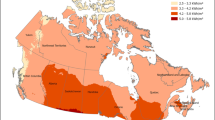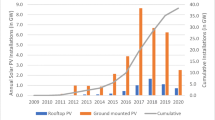Abstract
-
Part 1: Present Situation and Future Perspectives Part 2: Application on an Island Economy
Goal, Scope and Background
Incorporation of exposure and risk concepts into life cycle impact assessment (LCIA) is often impaired by the number of sources and the complexity of site-specific impact assessment, especially when input-output (I-O) analysis is used to evaluate upstream processes. This makes it difficult to interpret LCIA outputs, especially in policy contexts. In this study, we develop an LCIA tool which takes into account the geographical variability in both emissions and exposure, and which can be applied to all economic sectors in I-O analysis. Our method relies on screening-level risk calculations and methods to estimate population exposure per unit of emissions from specific geographic locations.
Methods
We propose a simplified impact assessment approach using the concept of intake fraction, which is the fraction of a pollutant or its precursor emitted that is eventually inhaled or ingested by the population. Instead of running a complex site-specific exposure analysis, intake fractions allow for the accounting of the regional variability in exposure due to meteorological factors and population density without much computational burden. We calculate sector-specific intake fractions using previously-derived regression models and apply these values to the supply chain emissions to screen for the sectors whose emissions largely contribute to the total exposures. Thus, the analytical steps are simplified by relying on these screening-level risk calculations. We estimate population exposure per unit emissions from specific geographic locations only for the facilities and pollutants that pass an initial screening analysis. We test our analytical approach with reference to the case of increasing insulation for new single-family homes in the US. We quantify the public health costs from increasing insulation manufacturing and compare them with the benefits from energy savings, focusing on mortality and morbidity associated with exposure to primary and secondary fine particles (PM2.5) as well as cancer risk associated with exposure to toxic air pollutants. We estimate health impacts using concentration-response functions from the published literature and compare the costs and benefits of the program by assigning monetary values to the health risks. In the second part of this paper, we present the results of our case study and consider the implications for incorporating exposure and risk concepts into I-O LCA.
Conclusions
We have presented a methodology to incorporate regional variability in emissions and exposure into input-output LCA, using reduced-form information about the relationship between emissions and population exposure, along with standard input-output analysis and risk assessment methods. The location-weighted intake fractions can overcome the difficulty in incorporation of regional exposure in LCIA.
Similar content being viewed by others
Author information
Authors and Affiliations
Corresponding author
Rights and permissions
About this article
Cite this article
Koroneos, C., Stylos, N. & Moussiopoulos, N. LCA of Multicrystalline Silicon Photovoltaic Systems - Part 1: Present Situation and Future Perspectives (8 pp). Int J Life Cycle Assessment 11, 129–136 (2006). https://doi.org/10.1065/lca2004.12.192.1
Received:
Accepted:
Published:
Issue Date:
DOI: https://doi.org/10.1065/lca2004.12.192.1




